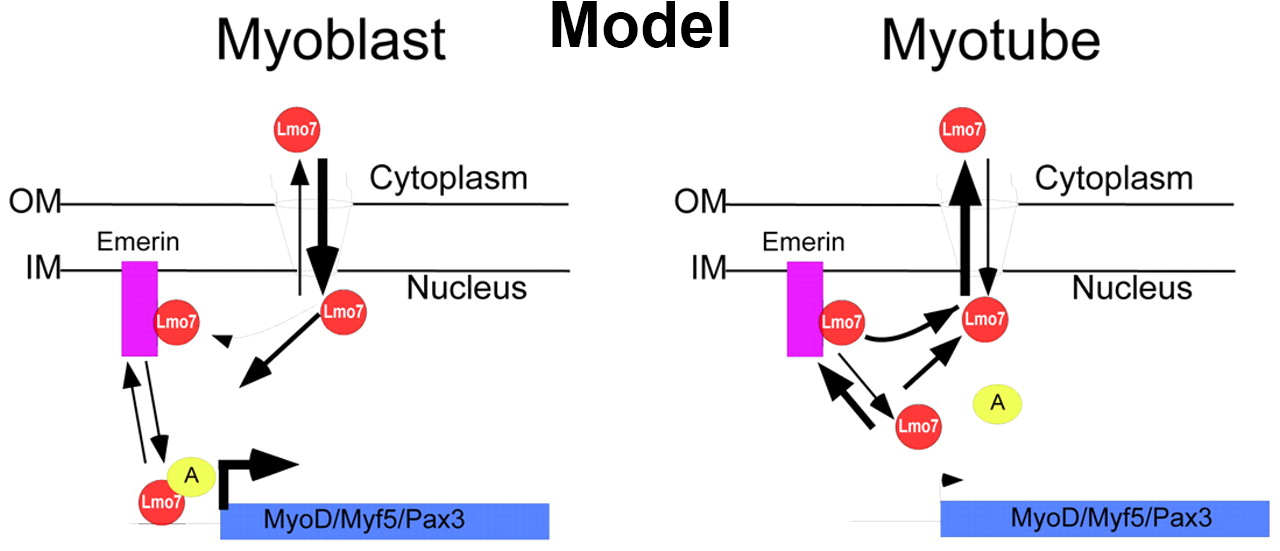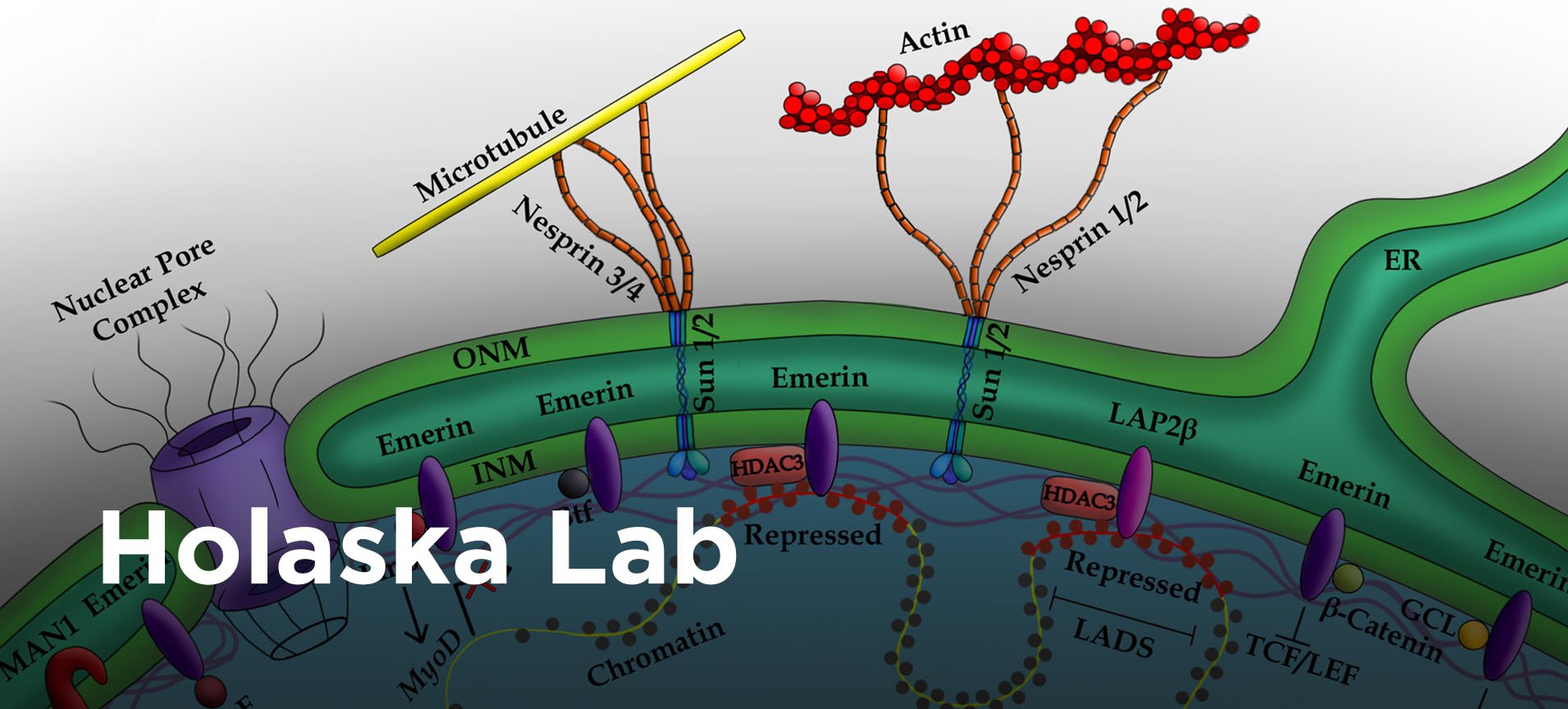Part IV
Part IV
Emerin Regulation of Transcription Factor Localization and Activity
We were the first to show emerin binds to many transcription regulators and inhibits their activity. We focus on one of these transcription regulators, Lim-domain only 7 (Lmo7) because of its apparent role in muscle. My laboratory showed emerin regulates the expression of important myogenic differentiation genes by regulating Lmo7. We found Lmo7 binds to the promoters of myogenic differentiation genes and activates their expression. Emerin binding to Lmo7 blocked Lmo7 binding to these promoters and also prevented Lmo7 accumulation in the nucleus, which led to reduced expression of these early differentiation genes at later stages of differentiation. This suggested the functional interaction of emerin and Lmo7 was important for the EDMD disease mechanism. To test if Lmo7 was important for muscle disease we generated Lmo7-null mice. These mice had phenotypes consistent with other mouse models of EDMD, thereby implicating Lmo7 in the EDMD disease mechanism.

The next step is to determine the mechanism for how Lmo7 regulates myogenic gene expression and its regulation by emerin. Experiments will determine how emerin regulates Lmo7 nuclear localization by testing if emerin 1) regulates Lmo7 nuclear transport or 2) merely sequesters Lmo7 in the nucleus. Of course, these possibilities are not mutually exclusive. Emerin regulation of Lmo7 binding to promoters in vitro and in vivo and a comprehensive analysis of Lmo7 binding to gene regulatory elements at various stages of differentiation will also be done. Other emerin-binding transcription regulators will be tested in these studies to determine whether this is a common mechanism utilized by cells to regulate transcription factor activity.
| ⇐ Back to Part III |
